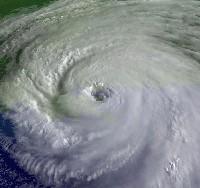Ivory-billed woodpecker evidence disputed

Is it a pileated woodpecker or the mythic ivory-billed woodpecker thought to be extinct for more than 50 years?
The NY Times is reporting that three ornithologists are challenging the evidence in a soon-to-be published article unnamed scientific journal:
The debate revolves around four seconds of fuzzy videotape that, by chance, captured a bird with sweeping white-and-black wings as it darted from its perch on the far side of a tupelo tree in April 2004 and flicked over swampy waters before vanishing in the trees 11 wing beats later.
That video clip was just one piece in a pile of drawings, recordings and other evidence collected in more than a year of searching and deploying cameras and listening devices across the vast swampy reaches of the Cache River National Wildlife Refuge.
Altogether, the original research team, led by scientists from Cornell University and the Nature Conservancy, compiled seven sightings, including the video, as well as recordings of a "double knock" sound typical of the ivory-billed bird.
But only the video was potentially solid enough to confirm for the wider ornithological community the existence of the bird, the authors said in various statements at the time.
Everyone agrees that the bird that appears on the tape is either an ivory-billed woodpecker or a pileated woodpecker, a slightly smaller bird that is relatively common. Both species have a mix of white and black plumage. However, the ivory-billed woodpecker has a white trailing edge to its wings while the pileated woodpecker has a black trailing edge.
The team that conducted the original search for the bird ran extensive tests, including recreating the scene captured in video using flapping, hand-held models of the two types of woodpecker. They concluded that the plumage patterns seen in the grainy image could only be that of the ivory-billed woodpecker.
The authors of the new paper disagree.
I remain optimistic, in particular because the recorded sound evidence is pretty compelling. The video can be viewed at ivorybill.org.
Further down in that NY Times article is this interesting little nugget of information which really deserves a much more extensive discussion:
The Bush administration used the reported sightings in Arkansas to promote its "cooperative conservation" philosophy. The day the rediscovery was publicized, the administration announced a variety of initiatives, including a plan to pay more than $13 million to landowners within the region's floodplains who plant and maintain forests.
The question we should be asking is, how much can the government regulate private property? By promoting compensation to landowners to keep trees on their land, isn't the Bush administration advancing an ideology that the government has no right to say what owner's can do? I may not have a popular perspective on this, but I contend that a title only entitles an owner to engage in activities that are sanctioned by society - since, after all, society provides legal (and physical) protection for that title and the resources defined in that title.
There's more on the ivory-billed woodpecker in my previous posts on that topic, and on other posts to see cypress/tupelo forests better defended.







0 Comments:
Post a Comment
<< Home